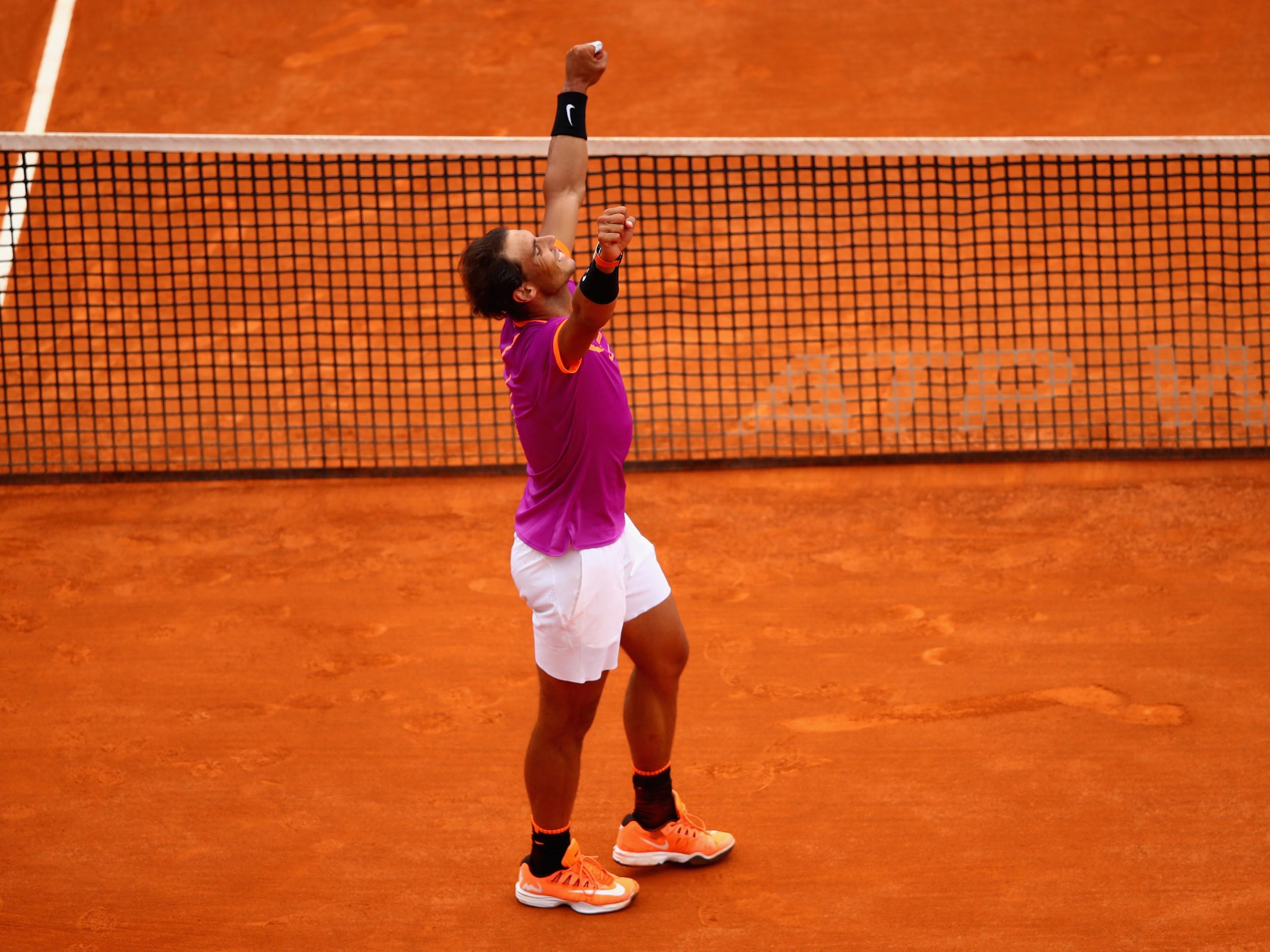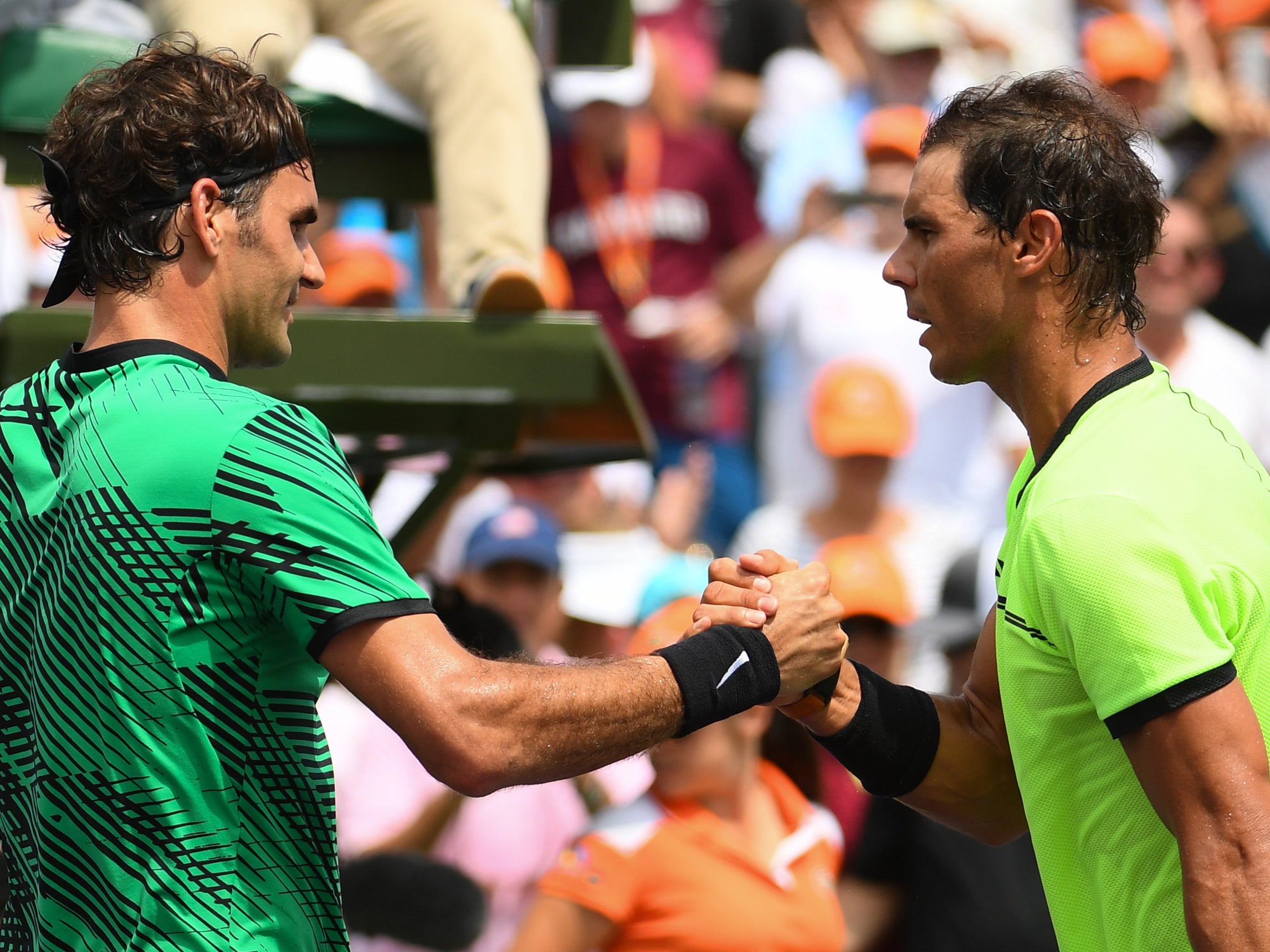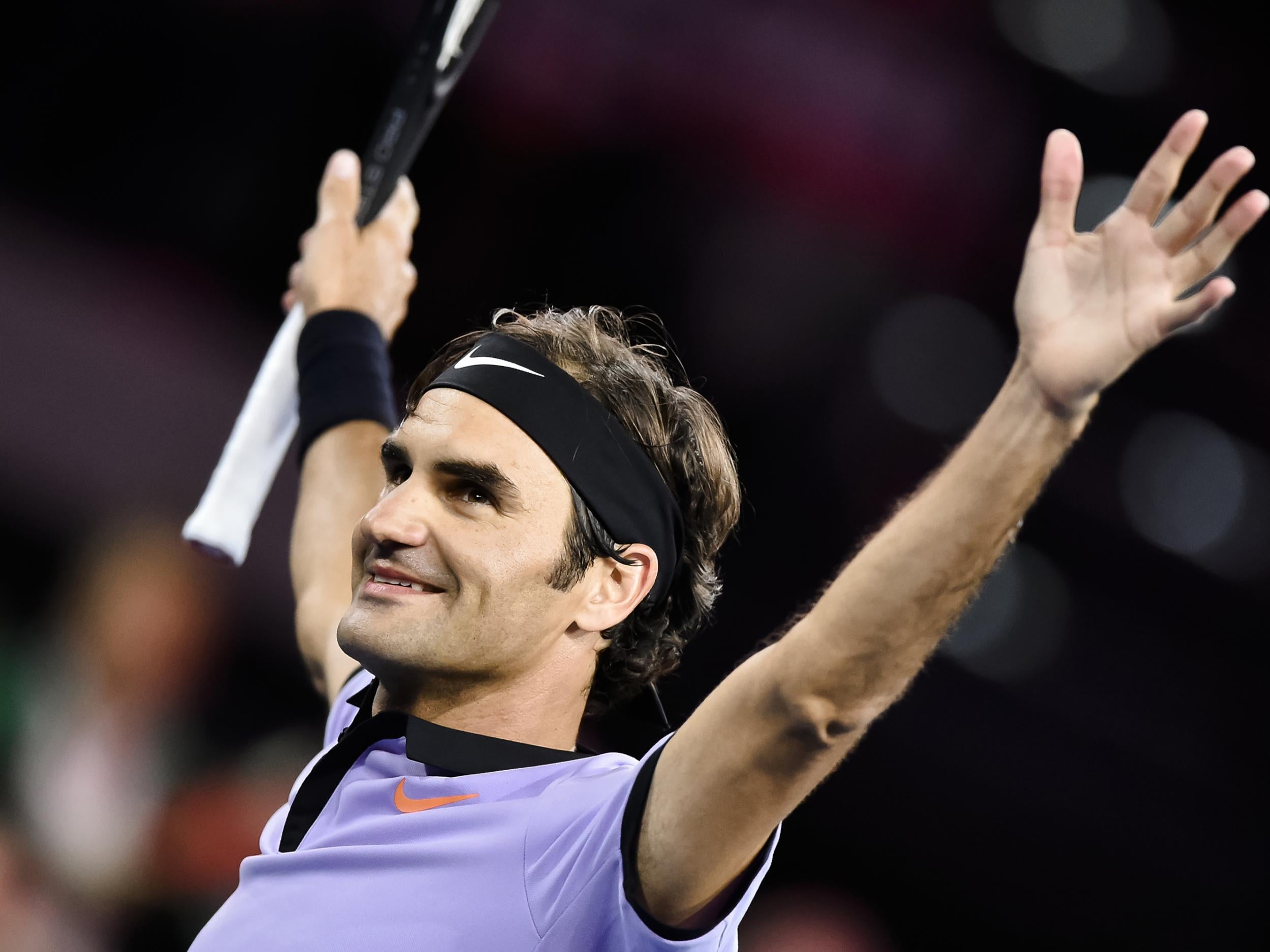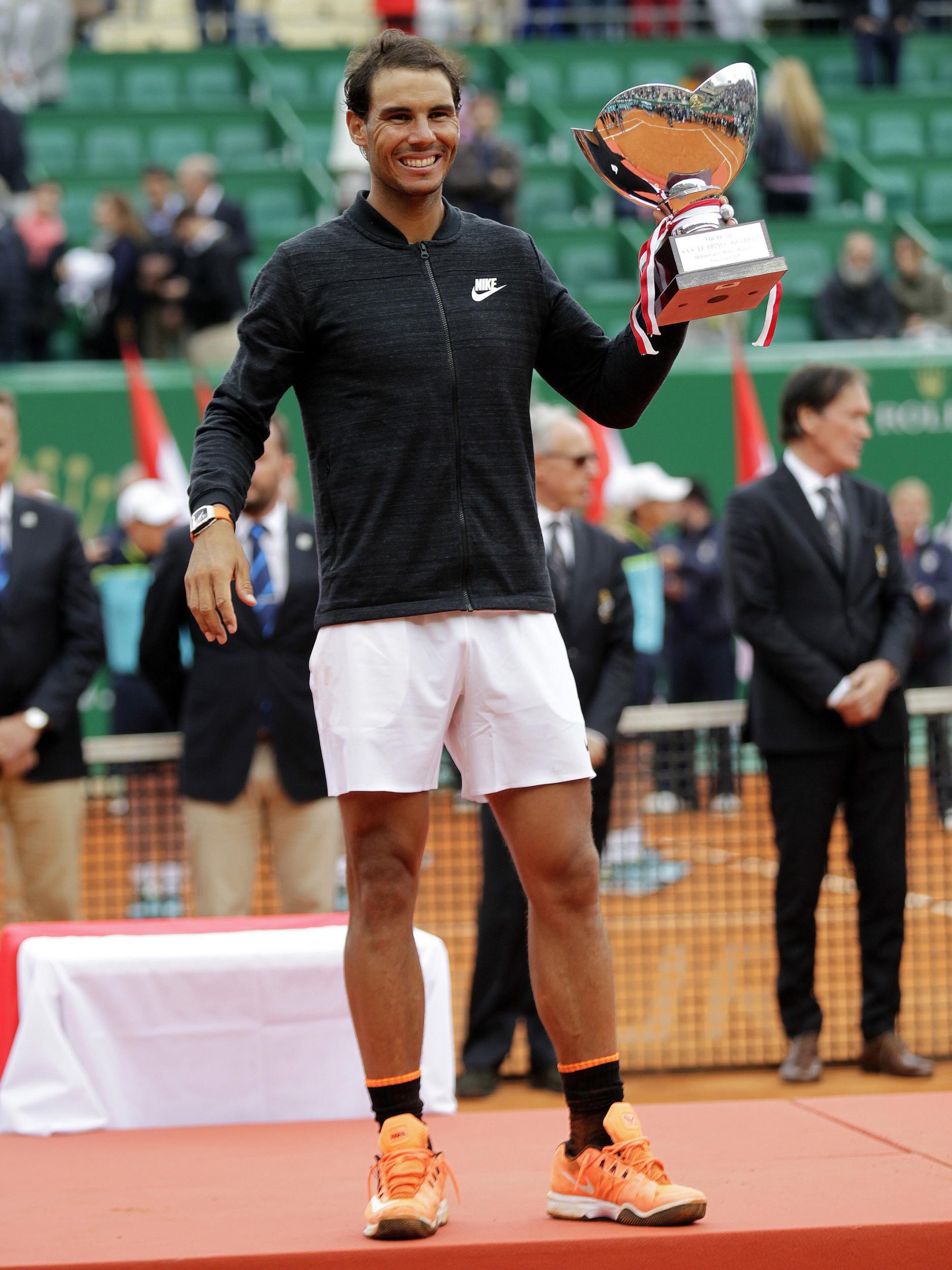Rafael Nadal's Monte Carlo mastery proves his comeback is every bit as impressive as Roger Federer's
At the start of the year, both men were returning from long-term injury lay-offs and seemingly approaching the end of their careers. But their success proves they remain the world's best

Roger Federer and Rafael Nadal’s rivalry may be one of the most thunderously competitive in the history of tennis, but it also happens to be of the most gracious. This was most evident late last year, when an injured Federer flew from his home on the shores of Lake Zurich to the isle of Majorca, to attend the opening ceremony of Nadal’s new Tennis Academy.
“I just felt it was only the right thing to do, to help him out,” Federer smiled, when quizzed by one reporter on why he had taken a day off from his rehabilitation programme to make the two-hour flight. “Because I asked myself what would I hope for. And my answer was that I would hope my biggest rival would call me up and say, ‘You need my help? I’m there.’”
It is difficult to imagine many other global sports stars being quite so magnanimous, especially factoring in that Federer has lost far more matches to Nadal than he has won (their head-to-head record currently stands at 14-23, even with Federer’s recent triumphs). But Federer’s respect for Nadal runs deep, as he admitted on stage next to him as he paid tribute to the numerous comebacks the Spaniard has made from injury in recent seasons.

“I’ve been going through my first big injury now, which has been fairly easy for me,” Federer told a small crowd of Spanish tennis fans last October. “I have enjoyed being at home and seeing my family and practice has been quite easy. But I do not know what it’s going to be like when I come back.
“That is something you have done a million times and that is one of the ways I am so inspired by you. You made it look so easy and were always back to the top very quickly and that is something I’m going to be thinking about when I come back to the tour.”
Clearly Federer has been thinking about it a lot because, since his return in January, he has won the Australian Open (for a fifth time), the Indian Wells Masters (for a fifth time) and the Miami Open (for a third time), having gone half a decade without winning any of those tournaments.
Federer has — of course — beaten Nadal in two of those finals, as well as knocking him out in the fourth round at Indian Wells. It is now over three years since he last lost to his most formidable rival. Naturally, his late career renaissance has been rapturously received by his adoring public, while its implications for the sport’s greatest rivalry have been chewed over. And the prevailing opinion has generally been that Federer is now firmly, finally, on top.

In reality, a strong case can be made that Nadal’s start to the season, comprising of three runners-up spots in Melbourne, Mexico and Miami, before a record tenth title in Monte Carlo, is just as — if not slightly more — impressive than Federer’s 18th Grand Slam success and third Sunshine Double. For it should not be ignored that a fit and firing Federer would always expect to be challenging for titles in the absence of Novak Djokovic and Andy Murray, who have both been struggling for form of late.
Nadal, on the other hand, has been made to pay for the boisterous, bicep-flaunting style of play that won him his first Grand Slam at the precocious age of 19. He has suffered deliberating knee, back and abductor injuries over the past few seasons and missed last year’s Wimbledon because of a wrist complaint. “To play pain-free was a long, long time ago,” he said a little sadly after the first round of this year’s Australian Open.

So to see Nadal repeatedly reaching big finals again, not to mention winning so many matches in close succession, is nothing short of extraordinary. A lesser player would have long since succumbed to injury but Nadal has repeatedly fought his way back to the top, with his recent title in Monte Carlo one of his most remarkable achievements.
Nadal’s 6-1, 6-3 victory over Albert Ramos Viñolas saw him become the first man in the Open Era to win 10 titles at a tournament, while the straight-sets win also saw him surpass Guillermo Vilas’ 49 clay-court titles. His mastery of the surface is now without rival and it is for good reasons that many observers consider him the favourite to win this year’s French Open.
At the age of 30 – and 12 years after winning his first Grand Slam – Nadal also has a very respectable chance to overhaul Murray at the top of the ATP rankings. His injury troubles meant Nadal only accrued 3255 rankings points last year, giving him an enticingly low number to defend this year which will likely see him significantly improve the World No 5 ranking he currently occupies.
By the time Wimbledon rolls around, there is a fine chance that Nadal will be back at No 1 for the first time since mid 2014; a permutation few were predicting ahead of the Australian Open. Their respective comebacks are both little short of staggering, and surely nobody would bet against either man winning yet more titles this season.
Join our commenting forum
Join thought-provoking conversations, follow other Independent readers and see their replies
Comments
Bookmark popover
Removed from bookmarks